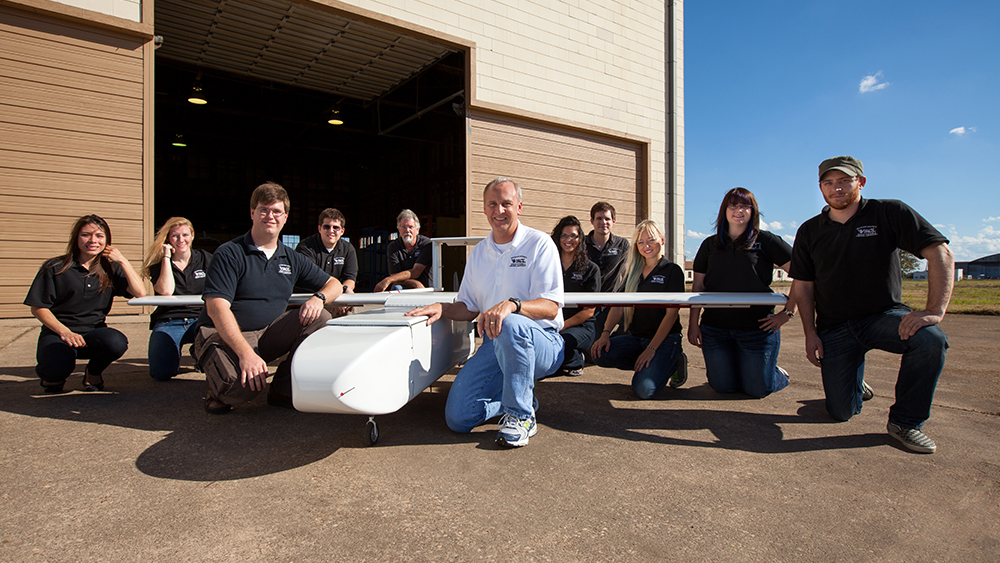
A team of inventors from the Vehicle Systems & Control Laboratory in the Department of Aerospace Engineering at Texas A&M University has been awarded us Patent 9,957,035 for “Un-Manned Aerial Vehicle Having Adjustable Wing Module, Tail and Landing Gear.”

The Pegasus unmanned air system was conceived, specified, designed, built and flown by the team of Dr. John Valasek, professor in the department, Andrew Beckett and James F. May, graduate research assistants, and Cecil C. Rhodes Jr., A&P technician and flight mechanics specialist. Pegasus was conceived as the Control Systems Integration Testbed for researching and evaluating fault tolerant adaptive control laws, autoland control laws, and a variety of airborne sensors for imaging and tracking missions.
Pegasus has more than 80 flights at the Texas A&M RELLIS campus, out of its design life of 300 takeoff and landing cycles. The airframe has a

Pegasus features variable static stability with a positionable wing location on the fuselage and multiple redundant control surfaces: eight ailerons, two elevators, two rudders and a throttle. Pegasus has a stall speed at maximum takeoff weight of 26 knots and a maximum speed of 90 knots. The endurance is 1+ hour depending upon fuel system configuration.